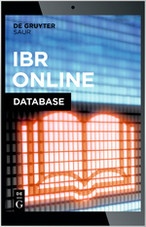- 18 December 2023
Article/Publication Details
Views: 535
ORTEGA Y GASSET AND THE QUESTION OF THE BODY
| Title in the language of publication: | ORTEGA Y GASSET AND THE QUESTION OF THE BODY |
| Author: | AGUSTÍN SERRANO DE HARO |
| Issue: |
HORIZON. Studies in Phenomenology. Vol. 12, №2 (2023), 270–284 |
| Language: | English |
| Document type: | Research Article |
| DOI : 10.21638/2226-5260-2023-12-2-270-284 | PDF (Downloads: 535) |
Abstract
My essay is devoted to the very early and attractive understanding of the lived body in Ortega y Gasset’s thought. I focus especially on the text “Vitality, Soul, Spirit” of 1925, which can be considered a proto-phenomenological approach to the issue of embodiment. Ortega identifies “vitality” with “the intrabody” and makes the latter the founding dimension of subjectivity, at the basis of the affective sphere (“soul”) and at the basis of the intellectual and volitional sphere (“spirit”). In a manner very close to Husserl’s unpublished manuscripts, he also shows how the body is the only reality of which there is simultaneously external perception, as if it were just another thing in the world that everyone else can see, and internal perception, which only the self can have and feel. The study also points out, however, the two major difficulties that I detect in Ortega’s precocious attempt. A first doubt concerns the too sharp stratification of vitality, soul and spirit, as can be seen in the analysis of the experiences of pain and of mobility. A second doubt concerns the ontological hesitations surrounding Ortega’s position, which is torn between a coherent phenomenological perspective and a vitalist position in which my body is only an emanation of the lifestream of the universe.
Keywords
Ortega y Gasset, body, phenomenology, vitality, first-person perspective, vitalism, pain, self-movement.
References
- Buytendijk, J. J. (1948). Über den Schmerz (H. Plessner, Trans.). Bern: Hans Huber Verlag.
- Cerezo, P. (1984). La voluntad de aventura. Aproximamiento crítico al pensamiento de Ortega y Gasset. Barcelona: Ariel.
- Gaos, J. (2013). La profecía en Ortega. In José Lasaga (Ed.), Los pasos perdidos. Escritos sobre Ortega (57-126). Madrid: Biblioteca Nueva.
- Lasaga, J. (1992). Sobre la superación de la dualidad cuerpo/espíritu en el pensamiento de Ortega. In J. San Martin (Ed.), Ortega y la fenomenología. Madrid: UNED, 193-202.
- García-Baró, M. (2012). Sentir y pensar la vida. Ensayos de fenomenología y filosofía española. Madrid: Trotta.
- Gobbi, G. (2022). “Introduzione” to Ortega y Gasset J. Il corpo tra symbolon e psyché. Meltemi: Milano.
- Gutiérrez Simón, R. (2016). Dimensiones del cuerpo y conocimiento moral en Ortega y Gasset. Azafea. Revista de Filosofía, 18, 227-244.
- Laín Entralgo, P. (1989). El cuerpo humano. Teoría actual. Madrid: Espasa-Calpe.
- Orringer, N. (1999). La corporalidad en Ortega y Gasset. Pamplona: Cuadernos de Anuario Filosófico.
- Ortega y Gasset, J. (2004a). Vitalidad, alma, espíritu. In Obras completas II (566-592). Madrid: Fundación José Ortega y Gasset/Taurus.
- Ortega y Gasset, J. (2004b). Meditaciones del Quijote. In Obras completas I (747-825). Madrid: Fundación José Ortega y Gasset/Taurus.
- Ortega y Gasset, J. (2004c) “El Quijote” en la escuela. In Obras completas II (401-427). Madrid: Fundación José Ortega y Gasset/Taurus.
- Ortega y Gasset, J. (2004d) Sobre la expresión fenómeno cósmico. In Obras completas II (680-695). Madrid: Fundación José Ortega y Gasset/Taurus.
- Ortega y Gasset, J. (2009) La razón histórica [Curso de 1940]. In Obras completas IX (477-558). Madrid: Fundación José Ortega y Gasset/Taurus.
- Ortega y Gasset, J. (1954). Vitalität, Seele, Geist (GA 1) (H. Weyl, Trans.). Stuttgart: DVA.
- Ortega y Gasset, J. (1961). Meditations on Quixote (E. Rouge & D. Marín, Trans.). New York: W.W. Norton.
- Parente, L. (In press, 2023). El cuerpo: punto cero de fluir cósmico. Una lectura orteguiana. Estudios orteguianos, 46.
- San Martin, J. (Ed.). (1992). Ortega y la fenomenología. Madrid: UNED.
- San Martin, J. (1994). Ensayos sobre Ortega. Madrid: UNED.
- San Martin, J. (1998). Fenomenología y cultura en Ortega. Madrid: Tecnos.
- San Martin, J. (2012). La filosofía de Ortega y Gasset. Madrid: Biblioteca Nueva.
- Serrano de Haro, A. (2013). Apariciones y eclipses del cuerpo propio. In J. Zamora Bonilla (Ed.), Guía Comares de Ortega y Gasset (311-327). Granada: Comares.

This work is licensed under a Creative Commons Attribution-NonCommercial 4.0 International License.

|
|
|
|
|

|
|
|
|
|

|
|
|
|
|
|
|
|
|
|
|
|
|
|
|
|
|
|
|
|
|
|

|
|
|
|
|
|
|
|
|
|
|
|
|
|
|
|
|
|
|
|
|
|
|
|
|
|
|
|

|

|
Social networks:





